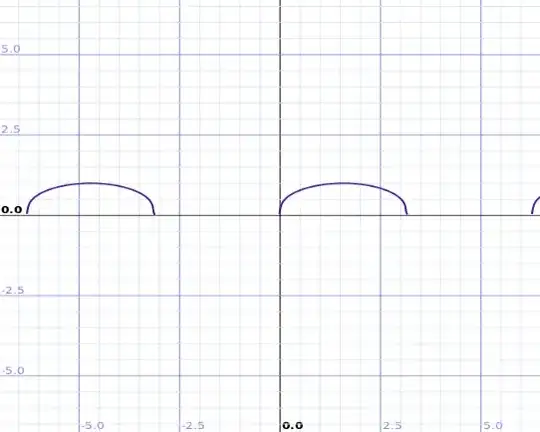I'm doing a problem where my task is to determine whether a given function is continuous, piecewise continuous or piecewise smooth on interval $[-\pi, \pi]$. According to my book the function:
$$\sqrt[\leftroot{0}\uproot{0}3]{\sin(\theta)}$$
is continuous on that interval. Here is a graph of the function:

I can see that the function is continuous on the interval $[0, \pi]$ and not defined on the interval $(-\pi, 0)$. I have understood that continuity means that we can draw the graph "without lifting the pencil" at any point. But if I would draw the function $\sqrt[\leftroot{0}\uproot{0}3]{\sin(\theta)}$ on interval $[-\pi, \pi]$ then I would not have any gap on the interval $[0, \pi]$, but I would have a gap between the point $-\pi$ and the interval $[0, \pi]$. So is this then continuous or not on the interval $[-\pi, \pi]$?
In addition, the claim that a continuous function is "drawn without lifting the pencil" (which is by the way, not a mathematical statement) is true only if f is continuous and defined on an interval.
– Taladris Mar 06 '14 at 07:53Thank you for the comment on the Holder example. I guess "the graph can be drawn without lifting the pencil" is usually a non mathematical but intuitive way to say that "the image of an interval a continuous function is connected".
– Taladris Mar 06 '14 at 08:22